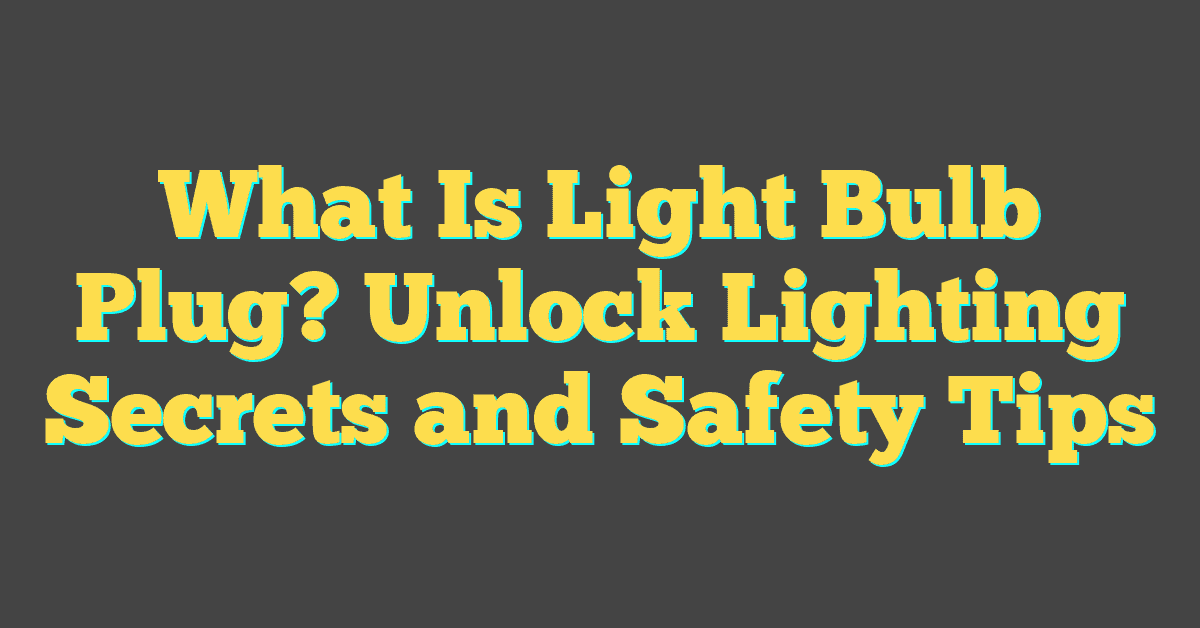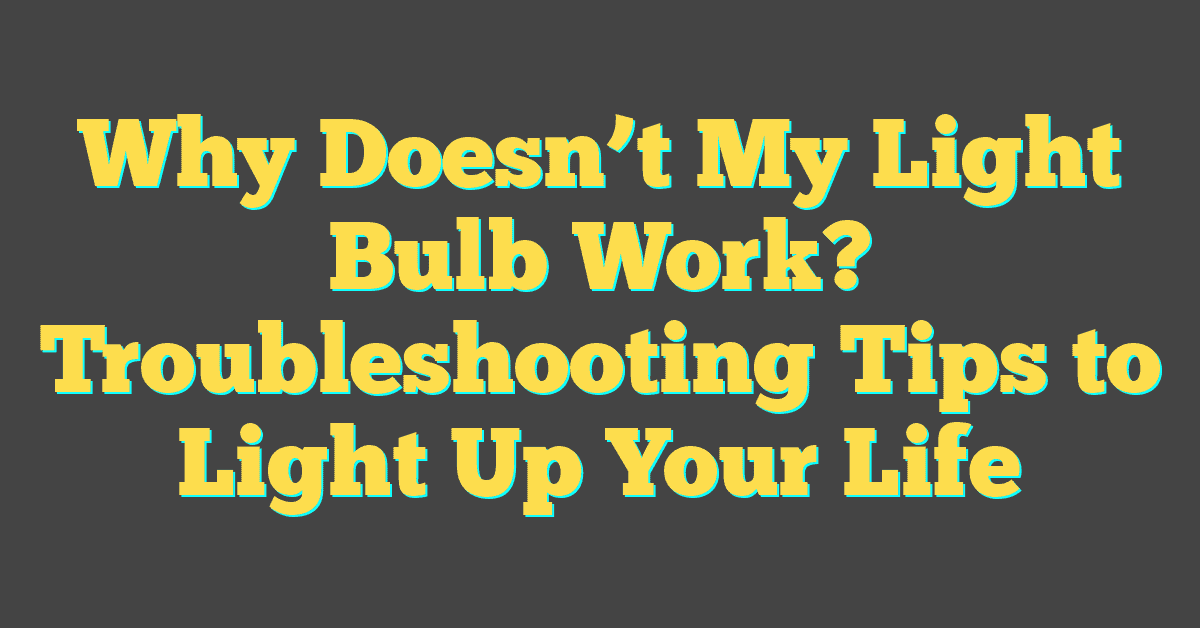If you’ve ever felt your mood dip as the days get shorter, you’re not alone. Seasonal changes can often trigger a slump, but did you know that the type of light bulbs you use might help? That’s right, the secret to a brighter mood could be as simple as a switch of a bulb.
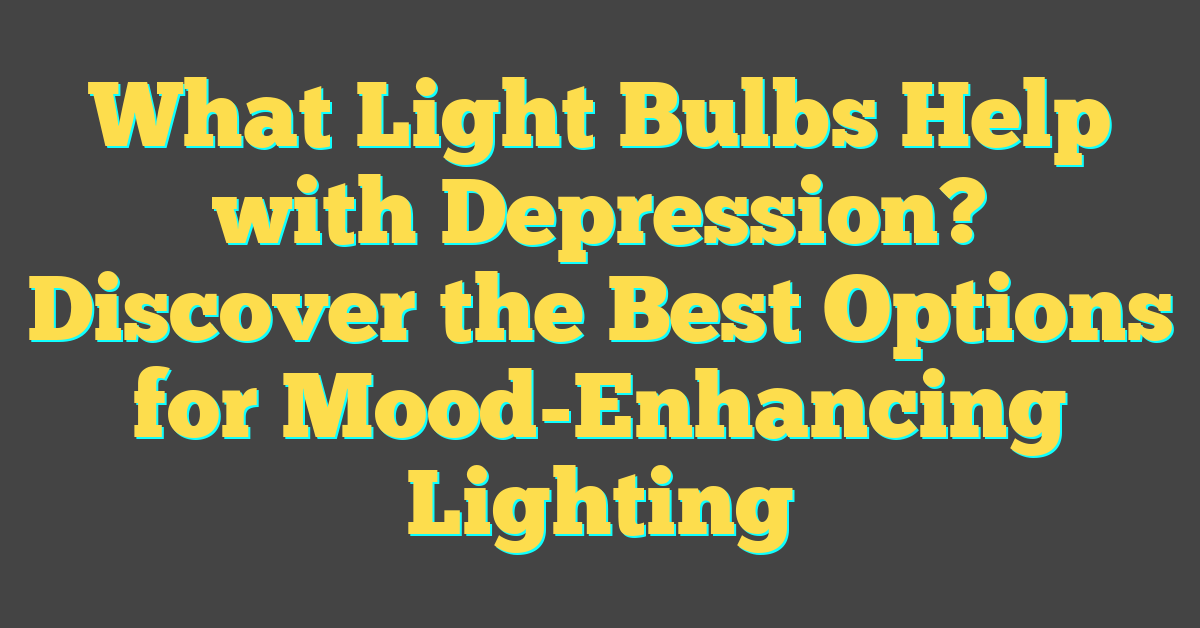
Light therapy has been a beacon of hope for those battling depression, especially Seasonal Affective Disorder (SAD). But with so many options out there, it’s hard to know which bulbs are best for lifting spirits. Let’s shed some light on the subject and find out how the right illumination can be a game-changer for your mental health.
The link between light bulbs and mood
Imagine your home as a canvas and light as the paint. Light quality significantly shapes how you perceive and interact with your space, but it goes even deeper than that. Your favorite DIY activities rely heavily on light, not just to see clearly but to feel bright and invigorated.
Research suggests that certain types of light can influence serotonin levels, which is key in stabilizing mood. Full-spectrum light bulbs are a top choice, mimicking natural sunlight and providing a broad spectrum of light, including UV light, which is thought to encourage serotonin production.
On the other hand, you might have heard about blue light and its notoriety for disrupting sleep patterns. However, during the day, this same blue light can be beneficial. It’s especially helpful in keeping you alert and improving reaction times. That’s why installing bulbs with a cooler color temperature in your workspaces can lead to more productive DIY projects.
But there’s more! You don’t have to stick to a one-size-fits-all approach. With LED technology, you can now have tunable bulbs that allow you to adjust color temperature throughout the day — cooler tones for the morning to wake you up and warmer tones for the evening to wind down.
For those particularly bluish days, bright white bulbs in the range of 5000K to 6500K color temperature might be the stimulation you need. These bulbs are known to reduce melatonin, a hormone that makes you sleepy and can deepen feelings of depression if produced during the day.
Not all lumens are created equal either. A bulb with a higher lumen output ensures that even on the cloudiest day, your indoor space is sufficiently lit to combat any mood dips. Remember, it’s not just about making your home brighter; it’s about making your days brighter, too.
Understanding Seasonal Affective Disorder (SAD)
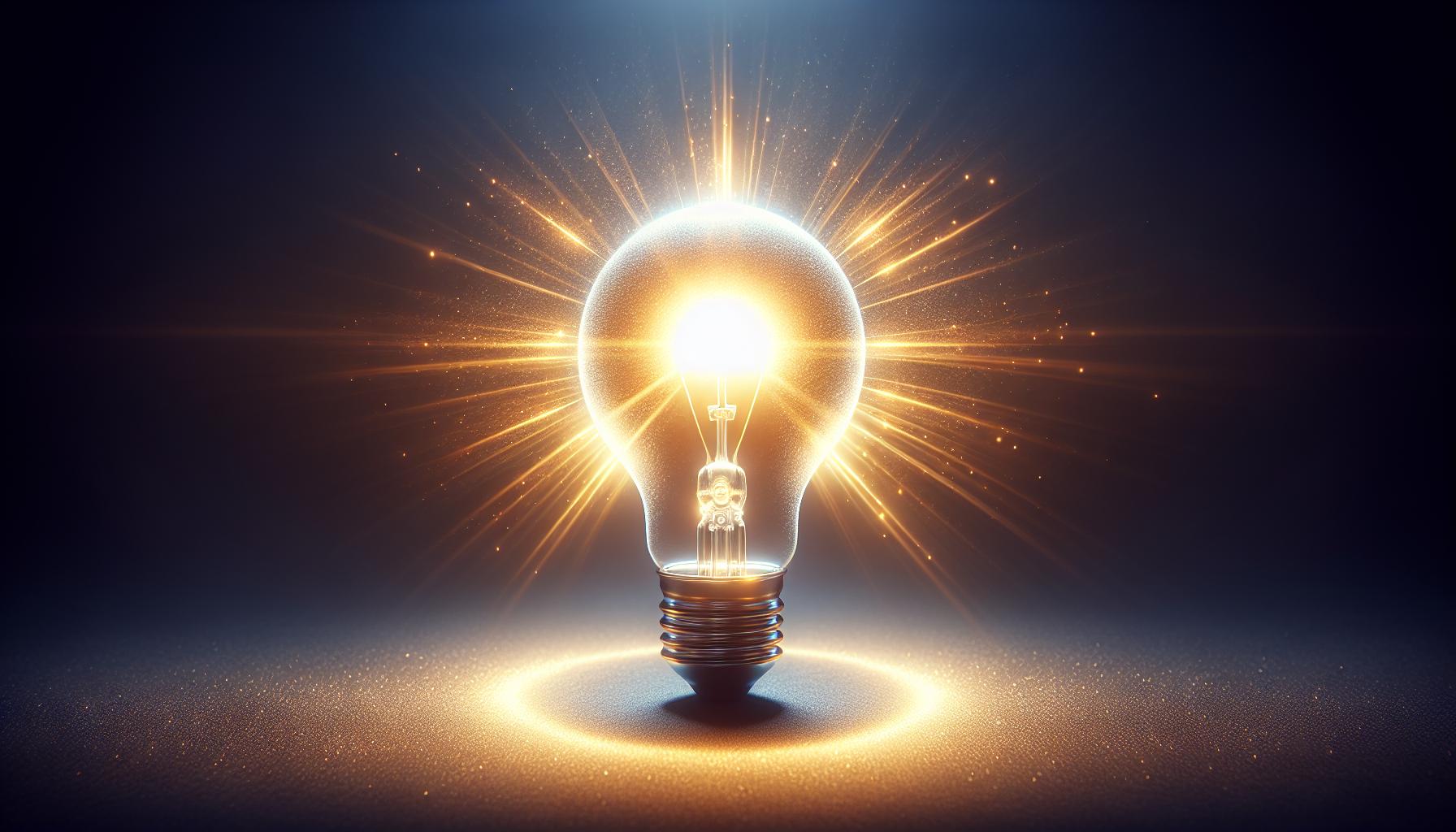
Seasonal Affective Disorder, often abbreviated as SAD, is a type of depression that’s directly related to changes in seasons. SAD typically starts in the fall and continues into the winter months, sapping your energy and making you feel moody. Less often, SAD causes depression in the spring or early summer.
Symptoms and Effects on Mood
If you’re wondering whether you or someone you know might be experiencing SAD, it’s important to recognize the symptoms. They can vary from mild to severe and include feelings of depression, low energy, and sleep issues. The impact on your day-to-day life can be significant, making it challenging to manage tasks you normally enjoy.
Light Bulbs as a Coping Mechanism
Treating SAD often includes light therapy or phototherapy, which involves exposure to light that mimics natural outdoor light. It’s been shown to cause a chemical change in your brain that lifts your mood and eases other symptoms of SAD. This is where the choice of light bulbs in your home or office can play a critical role.
Choosing the Right Bulbs
Selecting the right bulbs for light therapy can be crucial. Look for bulbs that simulate daylight with a color temperature of 5000K to 6500K and have a high lumen output to effectively mimic the sun’s brightness. Full-spectrum bulbs can offer a range of light that includes all colors, which is closest to sunlight. While these bulbs won’t cure SAD, they can certainly help alleviate some of the symptoms by brightening your environment and potentially improving your mood.
The Impact of Light Quality
The quality of light you’re exposed to during the day can make a significant difference in how you feel. For instance, a dimly lit room can worsen the symptoms of SAD, making it imperative to ensure that your living and working spaces are well-lit with high-quality light bulbs that enhance visibility and mood.
Remember, battling SAD with lighting is not only about brightness but also about quality and consistency. Integrating the right lighting solutions into your daily routine can help you maintain steady energy levels and a more positive disposition as you navigate through the darker months.
« How to Keep Light Bulbs from Sticking in the Socket: The Potato Trick Revealed
Can You Wash Light Bulbs? The Safe Cleaning Guide »
Disclaimer: Always consult with a healthcare provider for a proper diagnosis and before starting any treatment for SAD.
The benefits of light therapy
When you’re tackling the grey cloud of depression, light therapy stands out as a beacon of hope. To understand the allure, picture the sunrise dispelling the night’s darkness—that’s what proper lighting can do for your mood. Light therapy isn’t just about illuminating your surroundings; it’s a scientifically backed method used to counteract the effects of Seasonal Affective Disorder (SAD) and other forms of depression.
Imagine flipping a switch and feeling the warmth of a sunny day, even when it’s gloomy outside. By simulating sunlight, light therapy can help reset your circadian rhythm, which is closely tied to your mood. This daily “light bath” might be just what you need to feel more alert and energized.
The benefits of light therapy extend beyond just the psychological. As a lighting expert, you’ll find the particulars intriguing:
- Improved Sleep: Exposure to the right type of light during the day can help regulate your sleep-wake cycle, leading to more restful nights.
- Boosted Energy: Just like a well-plotted DIY project, light therapy can invigorate your drive, helping you tackle daily tasks with renewed vigor.
- Enhanced Mood: Daylight-quality bulbs can lift the fog of lethargy that often accompanies depression, improving overall well-being.
Remember, the key to successful light therapy is consistency. Making it part of your routine, much like how you’d schedule a DIY project, will ensure optimal results. And don’t forget, the type of bulbs you choose—preferring full-spectrum for authenticity—plays a critical role. Just like in a well-planned lighting design for home ambiance, selecting the right elements transforms the outcome.
Crafting your environment with carefully chosen bulbs doesn’t only brighten up your living space; it kindles the light within, perhaps that’s the most brilliant aspect of light therapy. As seasons change, you have the power to maintain a steady glow of happiness and health, all thanks to the marvel of modern light therapy solutions.
Choosing the right light bulbs for depression
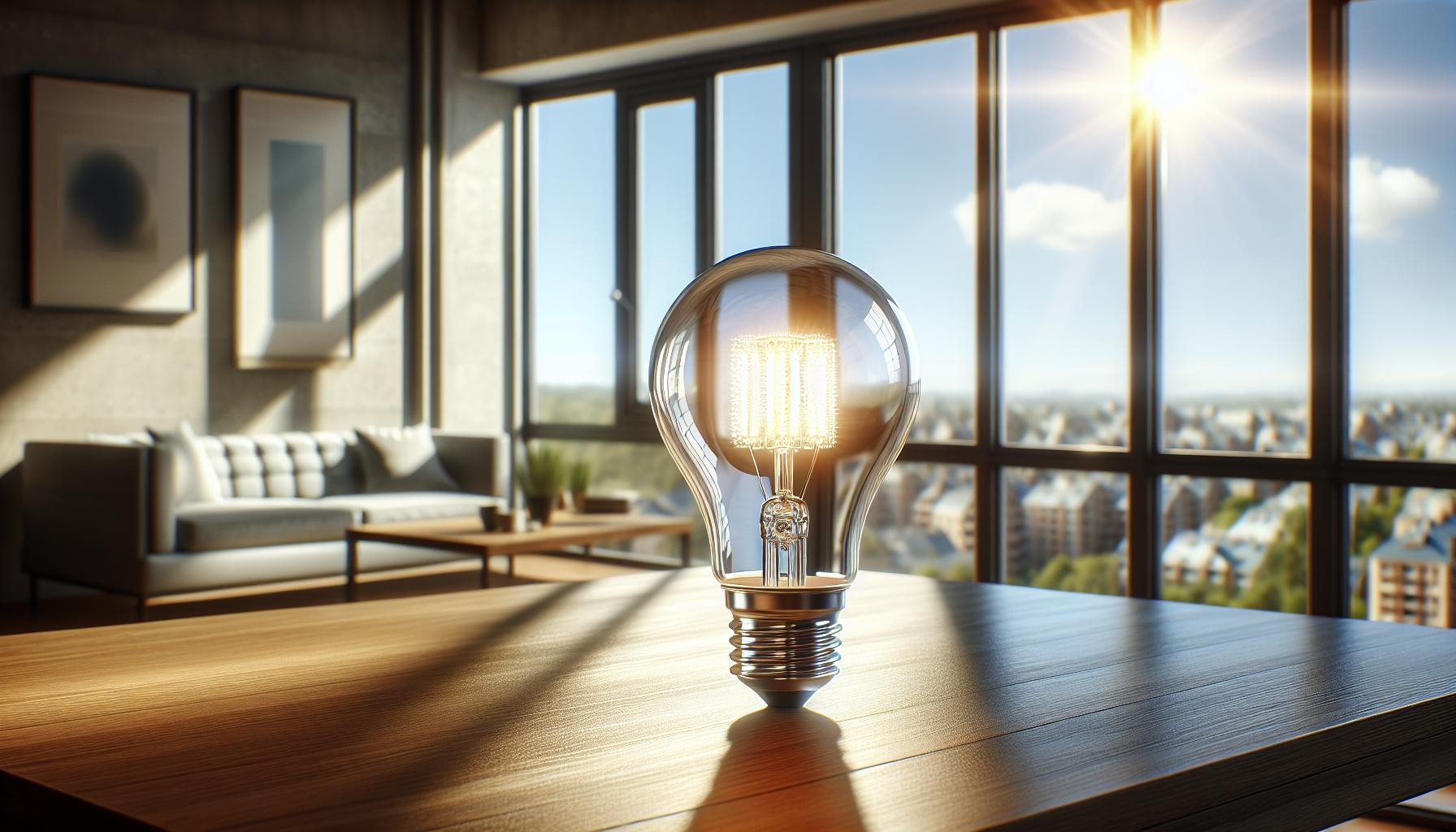
When you’re on the hunt for the ideal light bulbs to combat symptoms of depression, your aim should be to mimic the natural light as closely as possible. The market’s leader in this area is the full-spectrum bulb. These bulbs offer a range of color temperatures and brightness that closely resemble daylight–a critical component in managing depression.
However, not all full-spectrum bulbs are created equal. Here’s what you should look for:
- Color Temperature: A bulb with a color temperature between 5000K to 6500K can simulate noon daylight, which can aid in resetting your circadian rhythm effectively.
- Lumens: Brightness matters. Aim for a light bulb rated between 2,500 to 10,000 lumens to get the full benefits akin to natural sunlight.
Remember, the idea is to provide an environment that supports your body’s internal clock while reducing the harsh contrasts that can come from standard lighting.
Consider LED Options
LED bulbs are not only energy-efficient, but they also offer a broad spectrum of color temperatures. You can easily adjust these for the time of day or your current mood. With features like dimming capabilities and color-changing options, LEDs serve as an excellent choice for creating a therapeutic home ambiance.
Here are a few specs to consider when selecting LED light bulbs for this purpose:
- Look for LEDs labeled as “Daylight” or “Cool White” for the most effective mimicry of natural sunlight.
- Verify that the LED bulb offers a CRI (Color Rendering Index) of 90 or above. This ensures the light quality is crisp and enhances visibility, which can directly influence your mood.
Light Placement Matters
The position of your lighting can have a substantial impact on its effectiveness. Maximize natural light exposure by placing lamps close to where you spend most of your daylight hours. For workspaces or reading nooks, directional lighting that focuses the intensity where it’s needed without overwhelming the rest of the room is ideal.
When integrating light therapy into your home, remember to place lamps at eye level or higher to allow the light to reach your eyes indirectly. This will help you steer clear of glare and ensure the light is in your peripheral vision, which is often recommended for light therapy practices.
The different types of light bulbs to consider

When you’re on the hunt for the right light bulbs to combat depression, it’s like embarking on a quest for treasure that brightens not just your room, but also your mood. There’s a variety to choose from, each with their own unique benefits.
Incandescent Bulbs: These are your traditional bulbs. While they’re being phased out in favor of lighting that’s more energy-efficient, there’s a familiarity to them that some find comforting. The warm light they emit can create a cozy atmosphere, though they’re not as potent in combating depression as other types.
Halogen Bulbs: Think of halogen as the amped-up cousin of traditional incandescent bulbs. They’re brighter and closer to natural daylight, and while better, they still aren’t the top pick for tending to mental health concerns. Energy efficiency is a step up, but there’s still room for improvement.
Compact Fluorescent Lamps (CFLs): These spiral bulbs leap ahead in terms of energy savings. They offer a cooler, more vivid light than incandescents and halogens, which is a step in the right direction. However, be mindful of the light quality and try to find options that provide a full spectrum of light.
- Incandescent Bulbs: Warm and cozy.
- Halogen Bulbs: Brighter and more efficient.
- CFLs: Energy-saving with cooler light.
Light-Emitting Diodes (LEDs): Now you’re playing in the big leagues. LEDs can provide full-spectrum lighting, they last significantly longer, and their energy efficiency is top-notch. Plus, many LED bulbs give you the option to adjust the color temperature—that means you can tailor the lighting to what feels best for your mood and energy levels.
Here’s a quick look at the stats for these bulbs:
| Type | Brightness | Energy Efficiency | Life Span |
|---|---|---|---|
| Incandescent | Lower | Least efficient | Shortest |
| Halogen | Moderate | More efficient | Moderate |
| CFL | Higher | Efficient | Long |
| LED | Customizable | Most efficient | Longest |
Conclusion
You’ve got the scoop on the best light bulbs to brighten your mood and combat depression. Remember, while traditional bulbs like incandescents and CFLs have their place, it’s LEDs that shine when it comes to full-spectrum lighting that can make a real difference in your well-being. They’re not just good for you; they’re kind to your wallet and the planet too, thanks to their energy efficiency and long life. So why not switch to LED lighting and see if it brightens up your days? Your mind—and your electric bill—might just thank you.
Frequently Asked Questions
What are the best types of light bulbs for treating depression and SAD?
LED bulbs are recommended for treating depression and Seasonal Affective Disorder (SAD) as they provide full-spectrum lighting which is similar to natural light.
Are incandescent bulbs effective for depression and SAD therapy?
Incandescent bulbs offer some benefits but are less effective compared to LEDs for treating depression and SAD.
Can halogen bulbs be used to combat depression and SAD?
Halogen bulbs can be used, but they are not the most effective option for combating depression and SAD.
What are the benefits of compact fluorescent lamps (CFLs) in treating SAD?
CFLs are more energy-efficient than incandescent bulbs and can mimic natural daylight to some extent, but they still fall short of LEDs.
How do light bulbs compare in terms of brightness?
LEDs and CFLs can produce a high level of brightness, whereas incandescent and halogen bulbs may have a softer glow.
Which type of light bulb is the most energy-efficient?
LED bulbs are the most energy-efficient light bulbs when compared to incandescent, halogen, and CFLs.
In terms of lifespan, which light bulbs last longer?
LED bulbs have the longest lifespan, significantly outlasting incandescent, halogen, and CFL light bulbs.

